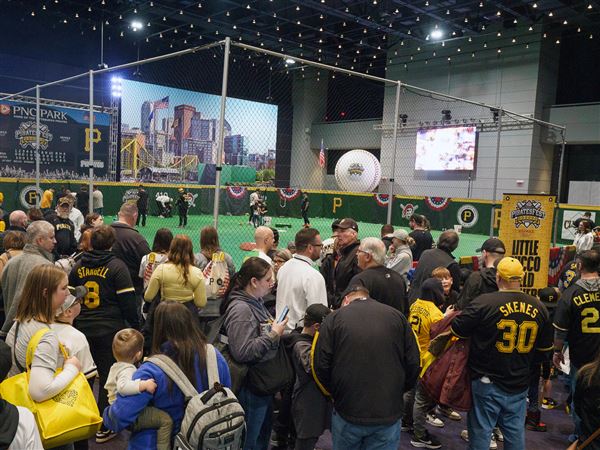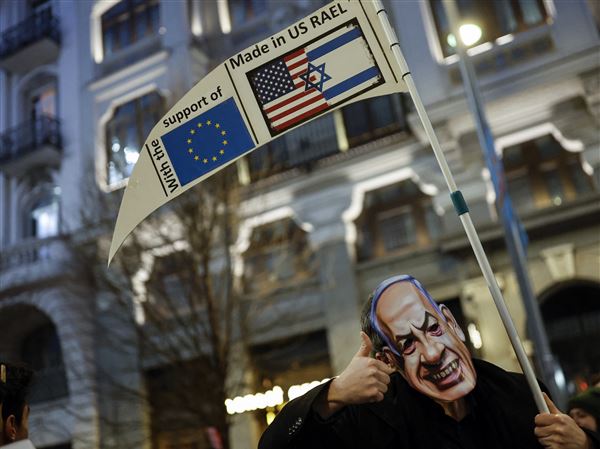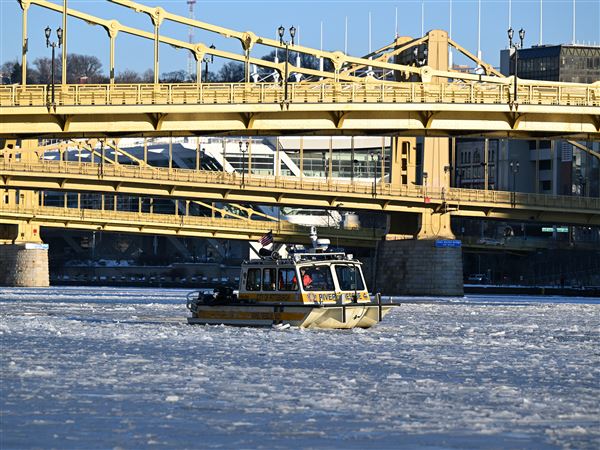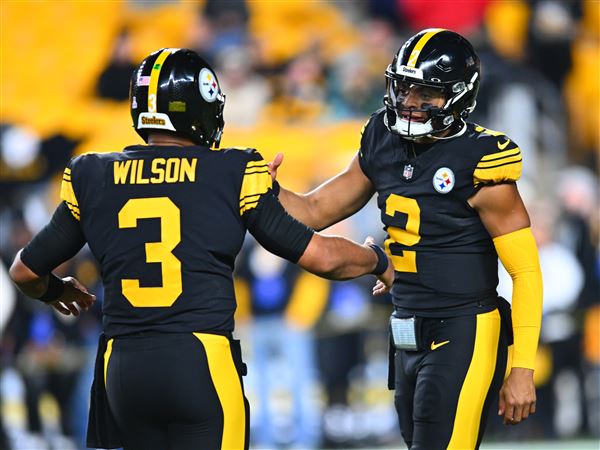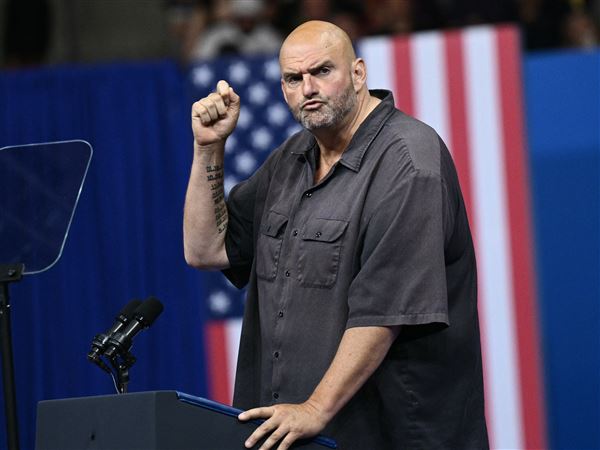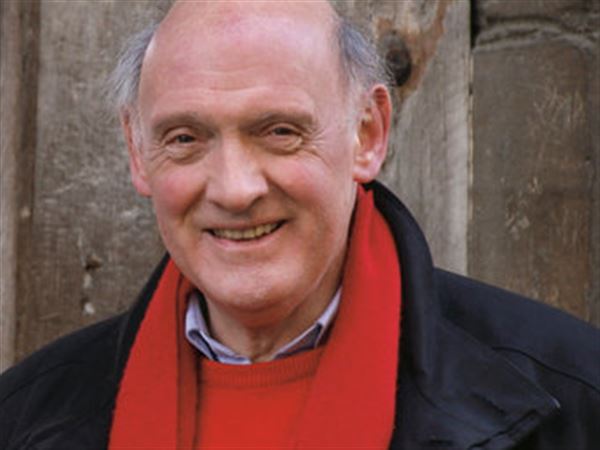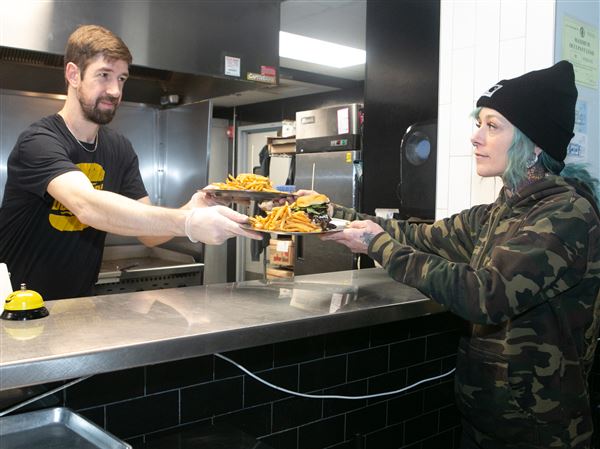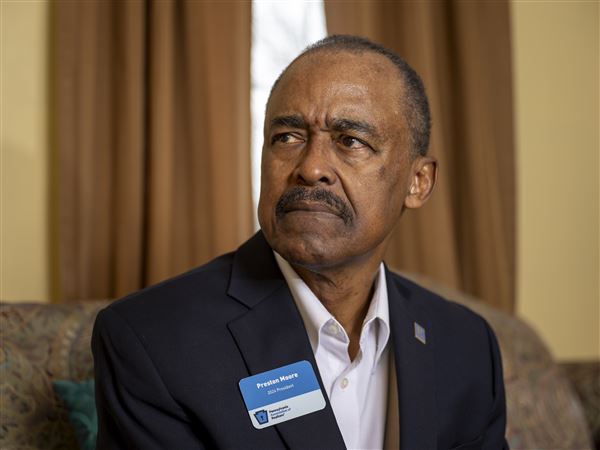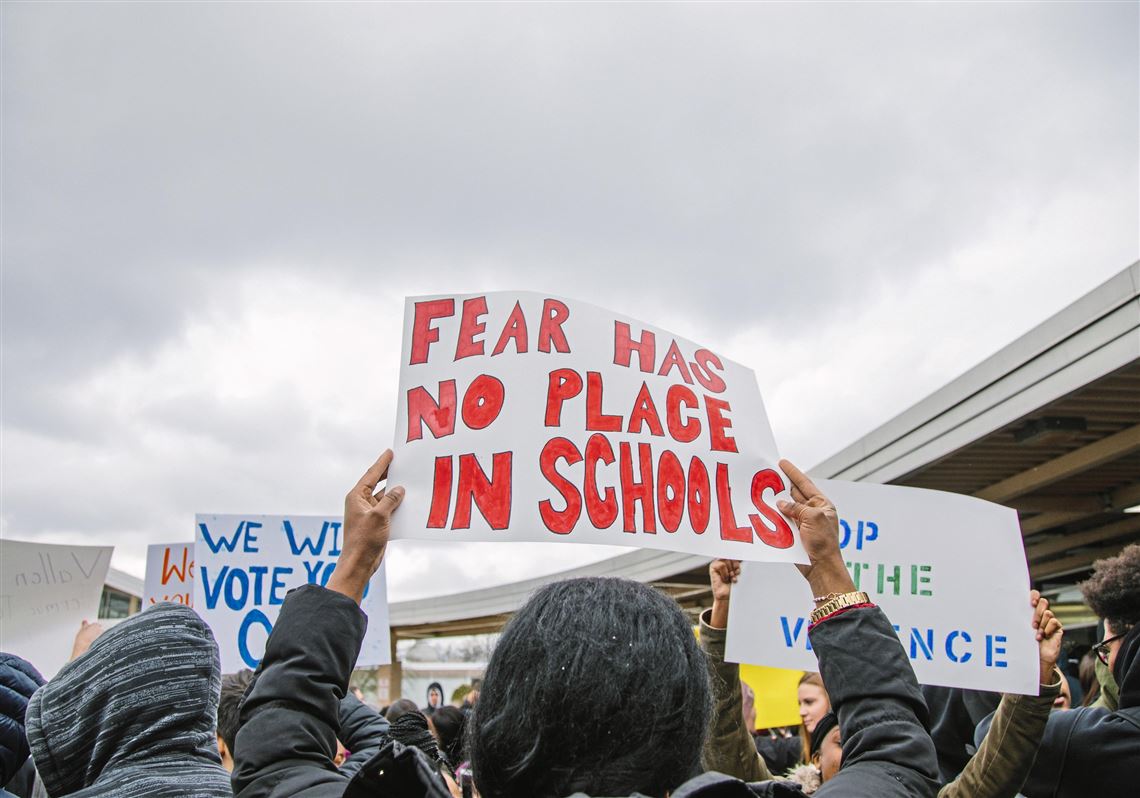Daevan Mangalmurti is a sophomore at the Pittsburgh Public Schools’ Barack Obama Academy of International Studies in East Liberty. He is an editor for the school’s newspaper, The Eagle (obamaeagle.org).
•
Every morning, 180 days a year, I stand with my classmates in a line stretching out the school door, waiting to get inside. For what can seem like forever, we each stand at attention, slowly crawling inside, willing to shove a little to make the queue move quicker.
When I finally reach the double doors, I step through to hand my backpack over to the security guard, take off my jacket and my belt, and walk through the narrow metal detectors that I and each of my friends and classmates must pass through to begin our day. Then I wait for the guard to finish digging through my bag for any threatening objects I might be carrying. With a hurried “thank you,” I grab my bag, zip up any open pockets, and rush upstairs, hoping to make it to first period in time for the bell.
Most of the time, this process leaves me feeling a little annoyed, exasperated or irate. Usually it’s a combination of the three. But since Feb. 14, I’ve felt none of those things. Instead, I’ve felt relief.
Every time I read about a school shooting in America, my heart goes out to the victims and the survivors. I think of how lucky I am that today I am not a student who goes to the school that just got shot up by a killer. I think of how painful it is that another set of teenagers has to go through the same pain that has been felt by their fellow students for a decade, the same sorrow that they thought would never come to them. I think of how enraging it is that politicians in the areas where schools are shot up refuse to take action to protect students; instead they offer the same meaningless homilies that politicians across the country have repeated to the point of aggravation since the Columbine shooting in 1999.
But most of all, I question why shootings happen there, and not here.
I ask why there has not been a single successful mass shooting at a city school in this country for half a century — why killers find success out in the rolling hills and never beneath sharp towers of steel. After a decade and a half of watching news coverage of hundreds of callous, senseless deaths in schools, I have come to believe that there are two major reasons for the safety of urban students. The recognition of these reasons by suburban and rural schools would allow them to protect their students far more effectively.
The first reason is a simple one: People assume that cities are unsafe to begin with, and security measures are heightened as a result. That’s why my high school has three security guards, two metal detectors, and a policy of not putting plastic knives in the cafeteria. That’s why a policewoman was in charge of the entrance line for myself and my classmates on Thursday morning. That’s a big part of why, for all the apathy and occasional absurdity of our security, there is no weaponry that ever sneaks into my school.
It’s not that a shooter couldn’t shoot it up — it’s that there are far easier targets only a few miles away in any direction. If suburban and rural schools instituted, as some students at Knoch High School in the north of the city have been advocating for, protective actions as simple as metal detectors and improved security, the mere presence of those measures as deterrents could bring down the vulnerability of schools dramatically.
The second reason for the safety of urban schools is just as basic as the first: America as a whole is addicted to guns — but its cities are not. And so, as callous lawmakers let the weapons equivalent of fentanyl — bump stocks and assault rifles — loose in small-town America, the nation’s cities have accepted that having harmful substances off the streets is safer for communities, safer for families and safer for students.
American cities have laws that make it a long and onerous process to get your hands on a gun. Most weapons used in shootings in cities like Chicago and New York are brought in from other counties or towns with more relaxed gun laws — the same counties and towns that are perpetual victims of school shootings, even as our city schools remain untouched.
Unfortunately, despite the fact that nearly all school shootings of any type over the past two decades have taken place in our rural heartland, rural schools and municipalities do not appear to have fully realized that they need to take the same measures cities have taken to keep their children safe. That means, above all else, tightening restrictions on guns.
I have not written here to say that city schools are perfect or that they are little utopias. They are not. Not when students have consistently lower test scores in cities than in the suburbs. Not when sneaking weed into school is a perennial problem. Not when many students have to rely on federal aid to eat. But they seem to be preventing school shootings in exactly the right way, and the issue of kids being shot in schools is the thing that my generation cares about more than anything else.
For as long as I can remember, I have watched news footage of school shootings and heard the wretched, scarred testimony of survivors. But until this year, I have never acted. Like most people in America, I always found myself gripped by cynicism, by a lack of hope that our country would ever free itself from its addiction to firearms. The media always moves on, and people are quick to forget, or ignore.
Now, though, I truly believe something has changed. America is more outraged and more resolute than it has been for half a decade, and the collective assumption we make about the permanence of kids dying at school looks like it is crumbling, bit by bit. We owe it to the dead to make sure it stays that way.
First Published: March 18, 2018, 4:00 a.m.
